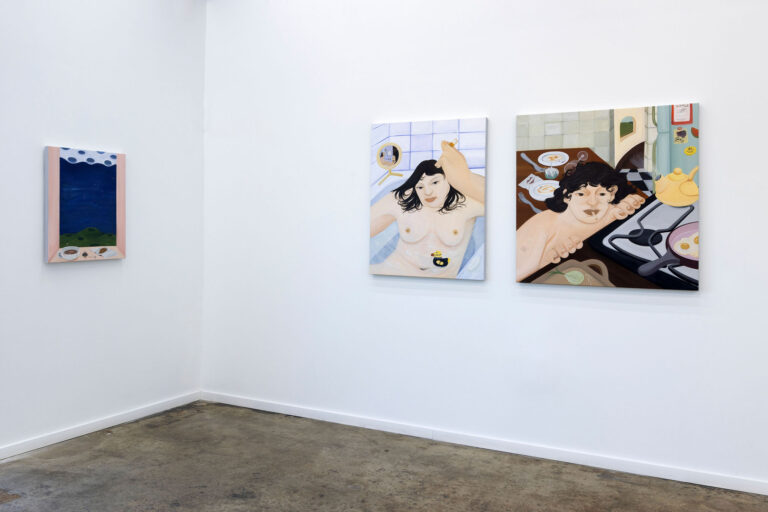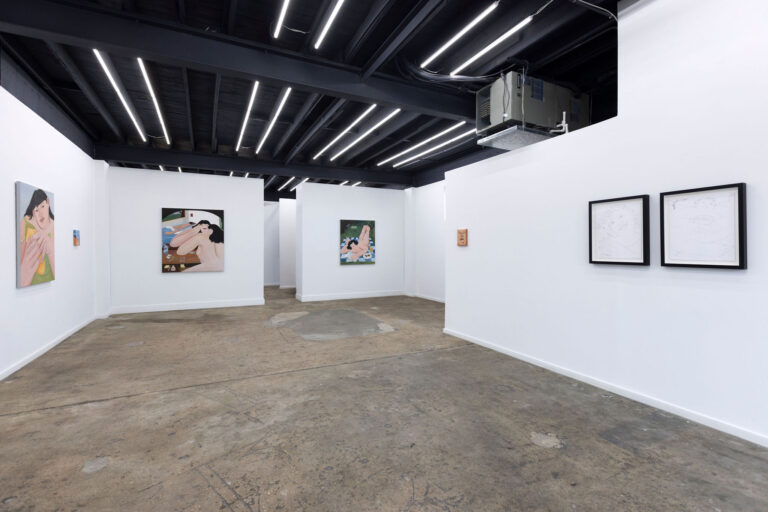SILLY LITTLE LIFE
Solo Show by MARA FAÚNDEZ
Nov 30 - January 11/ 2025
Mara Faúndez’s work delves into the creation of narratives drawn from the anecdotal, presenting female figures that appear as fragmented versions of herself. For Faúndez, painting becomes an intimate confrontation, a journey of self-recognition where everyday objects and layered texts bring subtle yet profound meaning to her compositions. Through these pieces, she explores deeply personal themes such as love, heartbreak, identity, and sexuality, often in scenes that blend the fantastical with the familiar.
Her vibrant use of saturated colors and nuanced tonal interactions are distinctive aspects of her work, creating an emotional landscape where color conveys as much meaning as the subjects themselves. Faúndez’s work invites viewers to navigate these surreal, intimate spaces, evoking complex emotional responses that resonate beyond the canvas, reminding us of the beauty and subtleties of everyday encounters.
Second Nature
Verónica Echeverría
Although the term camp was informally used in 19th-century Anglo-Saxon slang to describe an affected or extravagant pose, it was Susan Sontag, in her essay Notes on “Camp”, who solidified this concept as an aesthetic sensibility that values exaggeration, theatricality, stylization, and eccentricity, distinguishing it from other forms of art and aesthetics.
In the paintings of Silly Little Life, this sensibility is reflected in grotesque grimaces in close-ups, the expressions of pleasure and discomfort from its protagonists, as well as their deformed hands and always heavy bodies. In the depiction of flesh, there is a libidinous, sad, and sometimes pathetic quality. These traits are also noticeable in objects: mirrors, plates, clips, and furniture adopt this same attitude.
Rather than concealing or disguising reality, they disregard decorum, beauty, and any stable values or forms. These are bodies descending into the intimacy of a room, bathroom, or kitchen, embodying the repose brought on by sexual release. They are not lucid or daring characters, but figures projected as weakened, relaxed, and often fractured.
While it has been said that Faúndez’s interest lies in crafting narratives from anecdotes and that her figures represent different versions of herself, her characters embody an unsettling, voluptuous, and obscene distortion.
These figures transcend the anecdotal and biographical, belonging to another order: second nature.
Their gestures, intentions, and identity traits are filled with duplicity: naïve yet perverse, somewhat androgynous, offensive yet seductive.
























